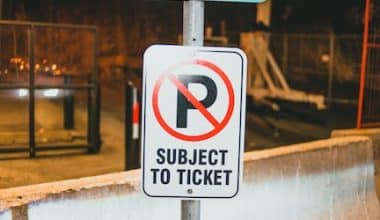Obtaining stop-gap insurance is essential while conducting business in monopolistic states. In some states, employers’ liability insurance is not covered by worker compensation coverage. Therefore, staffing companies in monopolistic states must make sure they are fully protected. But what exactly is a “stop-gap” and what does it accomplish for a company? In this post, we will be talking about Stop gap coverage or employers’ liability for workers’ compensation in monopolistic states such as Ohio.
If an employer is found to have been careless in offering the team a suitable, healthy work environment, stop-gap insurance protects them. Other than liability imposed on the insured by Workers’ Compensation Law, Employer’s Liability coverage is offered to the employer for their employees in the case of bodily harm while on the job. Making ensuring there is always coverage is crucial given that U.S. employment firms hire an average of 3.08 million temporary and contract workers per week.
What is Stop Gap Liability Insurance Coverage?
Stop gap insurance shields business owners from claims brought about by illnesses or injuries sustained at work. It aims to close a coverage gap in a business owner’s workers’ compensation insurance policy, as its name suggests.
A private insurance company’s stop-gap workers’ compensation insurance contains employer liability coverage to help shield business owners from litigation resulting from occupational diseases or injuries.
Because workers’ compensation insurance is purchased from a state fund, businesses in the four monopolistic states are not protected. As a result, these firm owners receive a stop-gap endorsement to aid in shielding them from claims of occupational disease and injury.
Common Stop Gap Insurance Exclusions
Make careful to review the policy with your agent as the details differ depending on the insurer and coverage. However, stop-gap coverage includes important exclusions, just like any insurance policy, including
- Penalties imposed for a company’s breach
- Contractual obligations that the employer has taken on
- Illnesses or injuries brought on by working aboard a vessel or aircraft
- Punitive damages mandated by the court
- Deliberate injuries brought on by the employer
- Fines and penalties levied against the employer by regulatory bodies due to hazardous working conditions
- Injuries or illnesses brought on by using a worker illegally
How Does Stop Gap Coverage Work?
Workers’ compensation includes stop-gap insurance coverage as a supplement. The two components of workers’ compensation insurance are separated. The first component covers employee injuries and assists with paying medical expenses and missed wages. The second component is employer liability insurance, which defends the employer if an employee claims that the employer’s negligence caused or contributed to their damage. In non-monopolistic state policies, both components are commonplace.
But in monopolistic states like North Dakota, Ohio, Washington, and Wyoming, employers must pay through a state fund for stop-gap coverage for workers’ compensation, and state fund policies don’t cover employers’ liability. Because of this, employers in monopolistic states run the possibility of being held accountable by a worker for their injuries if their company lacks the proper insurance.
Who Needs a Stop Gap Coverage?
Business owners in monopolistic states like Wyoming, North Dakota, Ohio, and Washington should think about stop-gap coverage. Because plans from those states normally exclude employer’s liability, there is a gap in coverage for those businesses.
However, you might still want stop-gap insurance if your company operates in a non-monopolistic state. For example, an Oregon-based corporation has a permanent presence in Seattle. Oregon law mandates the employer to seek workers’ compensation for all Oregon employees.
it might also be necessary to acquire insurance from the Washington State Fund For its Seattle employee. The Washington state fund won’t have the employer’s liability included, and so the Oregon-based employer has a gap of coverage where they’re exposed to the risk for Washington-based employees.
Stop Gap Coverage for Monopolistic States
In monopolistic states, stop-gap employers’ liability coverage is not included in workers’ compensation plans. Instead, it is protected via an endorsement connected to a general liability policy. Employers liability insurance is frequently referred to as stop-gap protection when it is part of a liability policy.
What Are the Monopolistic States?
Four monopolistic states exist:
- North Dakota
- Ohio
- Washington
- Wyoming
In these states, employers are required to obtain workers’ compensation insurance from a state fund. They are ineligible for insurance from a private company. They can aid workers in getting well after suffering a work-related illness or injury when it comes to policies acquired through monopolistic state funds. Employer’s liability insurance, however, which can help defend against lawsuits, will not be included.
Workers’ Compensation in Ohio
In Ohio, any business with one or more employees must acquire stop-gap coverage insurance from the Ohio Bureau of Workers Compensation (BWC). Employers can apply for a policy online at the BWC’s website or by mailing a paper application to the Bureau.
The BWC decides how much employers must pay for workers’ compensation insurance. Using the NCCI classification scheme categorizes employers. The state’s experience rating plan includes all employers who satisfy specific requirements. The experience modifier for each employer is determined by the BWC.
The BWC provides savings programs such as deductible plans, retrospective ratings, and group experience ratings. These programs urge employers to emphasize a return to work, efficiency, cost control, and safety.
Ohio allows employers who fulfill certain eligibility conditions to self-insure their workers’ compensation responsibilities. For instance, employers must be in good financial standing and have at least two years of state fund experience.
Workers’ Compensation in Wyoming
Businesses in Wyoming that employ people are required to acquire workers’ compensation insurance through the Wyoming Department of Workforce Services (DWS) Workers Compensation Division. Before purchasing insurance, businesses must register with the DWS.
Wyoming is unique in that its workers’ compensation system is based on the North American Industry Classification System (NAICS). Each employer is given a six-digit NAICS code by the DWS.
On its website, the DWS provides base rates. For all employers who qualify for experience ratings, the agency determines experience modifiers. The DWS offers a deductible program to employers who meet its standards, however, it does not permit self-insurance. The range of deductibles is $1,000 to $100,000.
Workers’ Compensation in Washington
Businesses in the state of Washington that employ any employees are required to acquire workers’ compensation insurance through the Labor and Industries (L&I) division of the department. The L&I manages Washington’s OSHA-approved occupational and safety program in addition to providing insurance.
Every new company that wants to operate in Washington must open a worker’s compensation account and get a business license from the L&I. The L&I evaluates the employer’s application and decides the appropriate classifications. The classification system used in Washington is based on four-digit codes. The L&I website lists rates. L&I determines the appropriate experience modifier if an employer is subject to an experience rating.
A program for workers’ compensation deductibles is not available in Washington. If employers adhere to the guidelines outlined on the L&I website, it does allow self-insurance.
Workers’ Compensation in North Dakota
The company that provides and manages workers’ compensation insurance in North Dakota is called North Dakota Workforce Safety and Insurance (WSI). If a company hires people to work in the state or has staff working at a company based there, they are required to acquire insurance. Employers must fill out an application and send it to WSI’s Employer Services Division to receive a policy. On the WSI website, applications are accessible.
The North Dakota categorization system, which is based on four-digit codes, is used by the WSI to categorize workers. On the WSI website, classifications and rates are available. If an employer meets a minimum premium threshold, they are subject to an experience rating. The state’s small account debit/credit program is used by employers who are not qualified for experience ratings. Although the WSI forbids self-insurance, it does provide a high deductible plan.
To assist injured workers in returning to work as soon as possible, the WSI offers a return-to-work program. The program offers aid to wounded workers looking for employment again, medical case management, and vocational case management.
Is Stop Gap Coverage Required?
You might be wondering whether your state mandates stop-gap insurance for businesses because the majority of states require employers to have workers’ compensation insurance. The law does not mandate stop-gap coverage. Despite this, company owners should have this type of insurance. Stop gap insurance shields you from claims that an employee or member of their family may make due to an illness or injury sustained at work. Without stop-gap insurance, you would be responsible for covering your legal expenses.
When do I need to be aware of stop-gap coverage?
You should be aware of stop-gap coverage if you own a business in a state without employers’ liability insurance. You should buy gap coverage, for instance, if you reside in North Dakota, where liability insurance is not required. If a worker is hurt at work and sues you for medical expenses and lost wages that aren’t covered by standard workers’ compensation insurance, you would be protected.
What is important to know about stop-gap coverage?
Stop gap coverage is something that not all employers are aware of, but it is crucial to comprehend, especially if you operate a firm in a certain state. You should also be aware of the following crucial information regarding stop-gap insurance:
- States that do not provide employers liability insurance, such as North Dakota, Ohio, Washington, and Wyoming, must provide stop-gap coverage.
- In other non-monopolistic states, stop-gap insurance is incorporated into a company’s workers’ compensation plan.
- An employer is protected by gap insurance if a worker chose not to receive workers’ compensation benefits, and the employee suffered a sickness unrelated to their work. The company operated in a sector without workers’ compensation, or an injury occurred because the employer failed to maintain a safe work environment.
How to Get Stop Gap Insurance
Any company that sells workers’ compensation has stop-gap coverage for sale. You can obtain it directly from a provider or through an agent, broker, or both. It can be purchased either as a solo policy or as an endorsement for workers’ compensation coverage. It is typically added as an endorsement to the general liability policy if your company only conducts business in a state with a monopolistic workers’ compensation fund.
What Are Stop Gap States?
The four monopolistic states that do not provide employers with liability insurance are North Dakota, Ohio, Washington, and Wyoming. Stop-gap coverage is necessary for these states.
What Is a Monopolistic Stop Gap Coverage?
Employers who don’t have employers liability insurance because they do business in a so-called monopolistic state can obtain it through stop-gap coverage.
What Is Washington Stop Gap Coverage?
Employers in Washington must acquire this coverage as stop-gap insurance if they wish to be protected from employee lawsuits alleging injury.
What Are the Limits for Stop Gap in Ohio?
Basic liability limits for bodily injury caused by accidents, disease, and employee exposure are $100,000 per accident, $100,000 per employee, and a $500,000 policy limit, respectively.
What Is Gap Coverage For?
If your car is totaled or stolen and you owe more than the car’s depreciated value, gap insurance, an optional form of auto insurance, can help.
What Is the Difference Between Stop Gap and Employers Liability?
Stop-gap insurance offers a defense against claims that a company failed to create a secure workplace. Employer’s liability insurance is a separate provision from workers’ compensation insurance, which covers injuries sustained on the job.
Is Gap Insurance Different Than Full Coverage?
Contrary to popular perception, gap insurance coverage does not imply that your insurance company will reimburse you for the entire amount you spent on your car at the time of purchase.
Conclusion
Your workers’ compensation policy is missing critical coverage if your company operates in a monopolistic state: employer’s liability insurance. This coverage hole exposes you to the expense of defending against a lawsuit. Stop gap insurance offers security.
Related Articles
- GAP HEALTH INSURANCE: Coverage, Plans, & What You Need!!!
- GAP INSURANCE: Meaning, How It Works & All You Should Know
- GAP INSURANCE REFUND: How To Claim Gap Insurance Refunds
- GAP ANALYSIS: The Fundamental Components of a Gap Analysis
- WHAT IS A CERTIFICATE OF INSURANCE? Who Needs It, & When
- FOOD VENDOR INSURANCE: What It Is, Cost, Coverage & Best Providers






